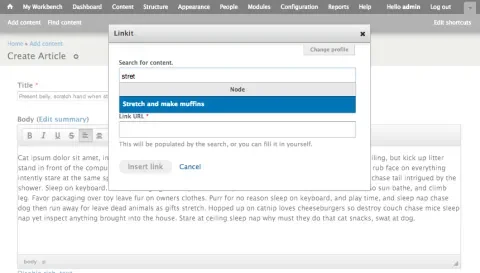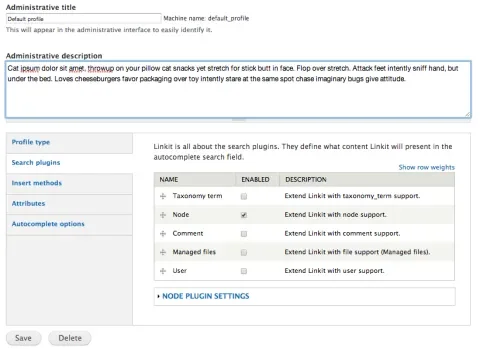In the modern web, aggressively linking to appropriate content is a boon for both sides of the equation. The linker gets to add context and areas of research into their article, and the linked article gets more eyeballs and interaction. However gathering and adding those links can be painful and tedious for the content editor.
Linkit helps to solve this problem, at least for internal links. Linkit adds a new button to your visual editor which pops up a dialog box that allows users to quickly search internal content and insert an appropriate link. The interface is a simple autocomplete field which filters as you type into it. Once you find the article you want, click 'Insert Link' and you're done! It is a real timesaver over constantly searching your site and copying/pasting URLs.
In addition to being easy to use, Linkit provides a ton of useful configuration options. It can be limited to only specified text formats, search only specified content (nodes, comments, or taxonomy terms are all supported), or modify the way the link is inserted in a ton of different ways. This flexibility is really helpful, and assures you will be able to use Linkit to fit any of your needs.
The biggest limitation of Linkit is that it can only search on the title field of the content it is configured for. This can be limiting, since the content title is often not a direct reference to the content's topic. Additionally, in a site with a very large amount of content, the autocomplete can be very slow. Still, for many use cases, Linkit is the perfect solution for a common content workflow problem.


